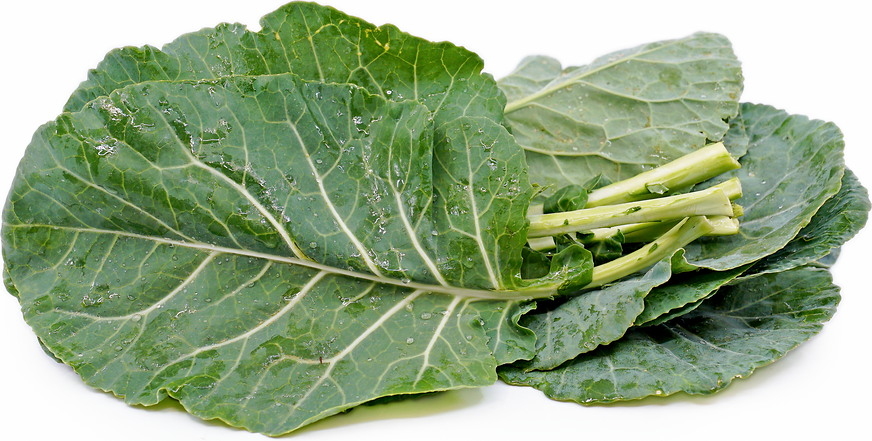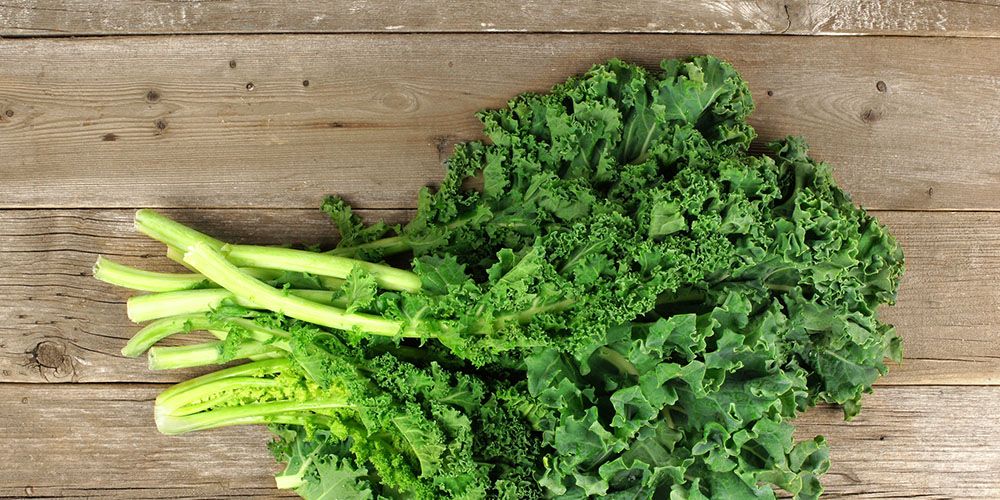Kale and collard greens occupy similar niches in a healthy diet. Both belong to the family of cruciferous vegetables, which also includes broccoli, cabbage, cauliflower, kale and Brussels sprouts. The main difference between the two vegetables is in their leaf shape or structure and nutritional contents. Collard features a medium green color, a smooth texture and an oval shape. Kale has crinkled leaves with darker grayish green leaves.
Kale and collard greens both provide rich sources of two fat-soluble vitamins, A and K, although kale boasts a higher vitamin content. Eating 1 cup of chopped collards provides you with 2,400 IU of vitamin A, as well as 183.9 micrograms of vitamin K. An equivalent serving of kale contains significantly more vitamin K, at 547.4 micrograms, as well as 10,302 IU of vitamin A.
Collard greens and kale also boost your intake of water-soluble vitamins. Both types of greens contain a range of B vitamins, including vitamin B-1, riboflavin, niacin, folic acid and vitamins B-5 and B-6. These nutrients support your metabolism and help maintain healthy skin and hair.
Collard Greens
Collard leaves are much broader, are not frilled, and resemble those of head cabbage. The main stem reaches a height of 60–120 cm (24–48 inches) with a rosette of leaves at the top. Lower leaves commonly are harvested progressively; the entire young rosette is sometimes harvested. Collard is usually grown as an annual, but it is a biennial plant and will produce yellow four-petaled flowers in loose clusters in its second year. The fruits are dry capsules known as siliques.

Collards are widely planted in the fall around the country. They will keep producing through most of the winter in places where the weather is mild, moist and crisp without frost. This member of the cabbage family is rich in vitamins and minerals and grows readily from seed. You can plant collards in September and October. By planting in the fall, you will avoid common cabbage-family pests such as cabbageworms, aphids and flea beetles.
Technically as a type of non-heading cabbage, collards are primarily grown for their large, edible leaves, and require a steady supply of nitrogen to produce a continuous flush of growth. Collards are a good choice for gardens in warm climates, since they tolerate heat better than the other members of the cabbage family.
Kale
Kale plants produce a rosette of elongated leaves with wavy to frilled margins. The leaves are typically blue-green in colour but can also be light green, red, or purple, depending on the variety. In a long growing season the main stem reaches a height of 60 cm (24 inches) or more.

The plant may be harvested by cutting off the entire rosette before the stem has elongated, or (especially in areas with long, cool growing periods) the individual lower leaves may be removed progressively as the main stem elongates. Though usually grown as an annual, kale is a biennial plant and produces yellow four-petaled flowers borne in loose clusters in its second year. The fruits are dry capsules known as siliques.
The leaves can be eaten fresh or as a cooked vegetable and are a source of vitamin A, vitamin C, calcium, iron, and vitamin B6. Include chopped kale in a raw salads or soups, or sprinkle apple cider vinegar and olive oil on raw or steamed kale to enhance its flavor.
Also Read: Difference Between Supper And Dinner
Difference Between Kale And Collard Greens In Tabular Form
| BASIS OF COMPARISON | COLLARD GREENS | KALE |
| Description | Collard green is a cabbage of a variety that does not develop a head. | Kale is a hardy cabbage of a variety which produces erect stems with large leaves and no compact head. |
| Color of Leaf | The color of collard green leaves varies from light to dark green. | The color of kale leaves varies from dark green to violet-green. |
| Leaf Shape | The leaves of the collard greens are plain. | The leaves of the kale are curly |
| Leaf Texture | The leaves of the collard greens are hard. | The leaves of the kale are soft |
| Life Cycle | Collard greens grow as biennials or perennials. | Kale grows either as annuals or biennials |
| Nutrition | Collard greens are rich in fiber and proteins but, low in calories. | kale is rich in vitamin K and iron |
Key Differences
- The texture and the taste of kale and collard greens is different. Kale is known to be chewier, thicker with a stronger and a more bitter flavor than collard greens.
- Collard features a medium green color, a smooth texture and an oval shape. Kale has crinkled leaves with darker grayish green leaves.
- Collard greens has content of calorie than Kale. All dark leafy greens are low in calories and provide health benefits based on their nutrient density.
- Collard greens have a strong smell and are acidic. It leaves a bitter taste in the taste buds, but not as bitter as kale.
- Kale also contains more iron than collard greens, offering 1.14 milligrams of the mineral per 1-cup serving, much more than the 0.07 milligrams found in an equivalent serving of collard greens.